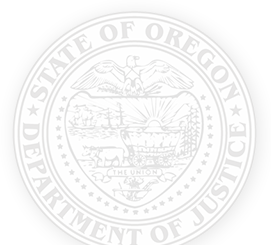Facilitating the Intervention, Assessment and Investigation of Child Abuse
The Child Abuse Multidisciplinary Intervention (CAMI) Account is the primary source of state funding for the intervention, assessment and investigation of child abuse.
State law requires CAMI funds be distributed through multidisciplinary teams (MDTs). MDTs are established in each county under the leadership of the local district attorney. CAMI funds are also distributed directly to five non-profit child abuse intervention centers to provide specialized regional assistance to the MDTs.
For more information about these organizations, please see CAMI Regional Children’s Advocacy Centers ».
2025 CACF One-Time Part 2 RFA (PDF)»
2023-25 CAMI RCAC Grant Awards (PDF) »
2023-25 Region Map with Centers (PDF)»
2023-25 CAMI MDT Allocations (PDF) »
2021-23 CAMI MDT Allocations (PDF)»
2019-21 CAMI MDT Allocations (PDF)»
2021-23 CAMI RCAC Allocations (PDF)»
2019-21 CAMI RCAC Allocations (PDF)»
How to Use the E-Grants System »
Important Grant Reporting Dates »
Karly’s Law
Karly’s Law was enacted in 2008 to improve the way that MDTs conduct investigations for physical abuse. At the root of Karly’s Law is the mandate that investigators identify suspicious physical injuries and then respond with specific medical referrals.
Today, children with suspicious physical injuries must be referred to a Designated Medical Professional (DMP) trained to recognize child abuse.
More information about Karly’s Law »
Child Fatality Reviews
County Child Fatality Review teams should use the web-based, standardized National Child Death Review (CDR) Reporting System » to report and collect case data. All local CDR teams will need login information.
Log in to the CDR Case Reporting system »
Additional Resources
- CAMI Handbook (PDF) »
- CAMI MDT Allowable and Unallowable Costs (PDF) »
- Oregon Revised Statutes Pertaining to CAMI »
- Oregon Administrative Rules Pertaining to CAMI »
- Oregon Interviewing Guidelines Fifth Edition, 2024 (PDF)»
- Oregon Interviewing Guidelines Fourth Edition, 2018 (PDF)»
- Oregon Interviewing Guidelines Third Edition, 2012 (PDF)»
- Forensic Interviewer Onboarding (PDF) »
- CVSSD E-Grants Information »
- Important Grant Reporting Dates »
- 2015-2017 CAMI MDT Allocations (PDF) »
- 2015-2017 CAMI RSP Allocations (PDF) »
- 2017-19 CAMI MDT Allocations (PDF) »
- 2017-19 CAMI RSP Allocations (PDF) »
- 2021-23 Children’s Advocacy Center Fund RFA (PDF)»
- CAMI Advisory Council»
- Training Resources for CVSSD Grantees »
